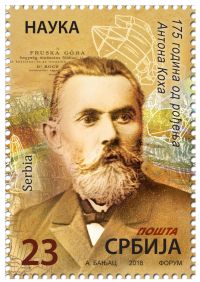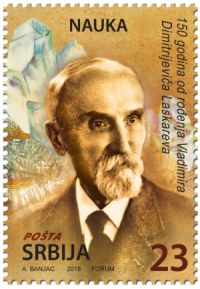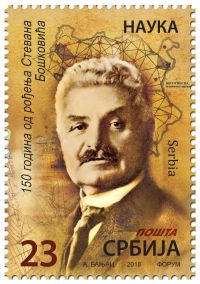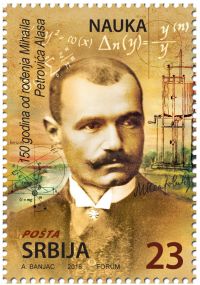Serbia 2018 "Science"
| <prev | back to index | next> |
| Issue Date | 10.07.2018 |
| ID | Michel: 809-812; Scott: 826a-d; Stanley Gibbons: ; Yvert et Tellier: 799-802; Category: pR |
| Designer | Anamari Banjac |
| Stamps in set | 4 |
| Value |
RSD 23 - 175th anniversary of Antal Koch RSD 23 - 150th anniversary of Vladimir D. Laskarev RSD 23 - 150th anniversary of Stevan Boskovic RSD 23 - 150th anniversary of Mihailo Petrovic Alas |
| Emission/Type | commemorative |
| Places of issue | Belgrade |
| Size (width x height) | 29 mm x 42 mm |
| Layout | Mini Sheets of 4 stamps |
| Products | FDC x2 |
| Paper | |
| Perforation | 13.25 x 13.25 |
| Print Technique | Offset, 4 colours |
| Printed by | Forum Novi Sad |
| Quantity | 15.000 sets |
| Issuing Authority | Public Enterprise Post of Serbia Belgrade |
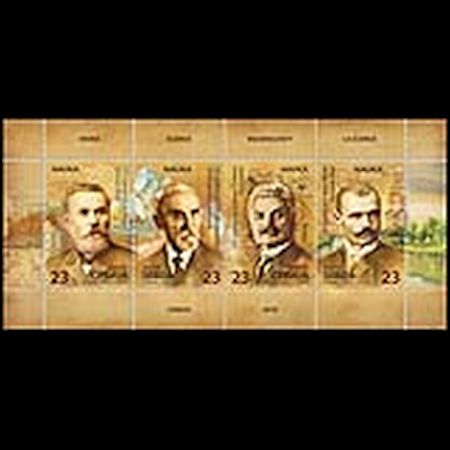
On July 10th, 2018, the Post Authority of Serbia issued the Mini-Sheet with 4 stamps of some famous scientists of Serbia. The Mini-Sheet was sold inside a small folder that includes information about the people depicted on the stamps. Two of them Vladimir D. Laskarev and Antan Koch were geologists and paleontologists.
The text below was published inside a booklet issued by the Serbian Post in 2018.
175th anniversary of Antal Koch
Antal/Anton Koch (Sombor, 7.1.1843 – Budapest, 8.2.1927), after completing his studies in Pest, Koch worked at the Geological Institute in Budapest from 1869 and got sub-specialization in Vienna and Bonn (1869–1970). He was appointed at Kolozsvаr/Cluj for University Professor of geology and mineralogy in 1872. In 1895 he became a member of Hungarian Academy of Sciences and continued his work as the Professor of geology and paleontology in Budapest.In 1864 Koch started with the investigations of trachites and geology of Fruska Gora Mts. The topic of his inaugural academic address was the geology of Fruska Gora (it became the first geologic monography with the first geologic map of Fruska Gora). The main highlights of his scientific work were the review of Transylvanian minerals (1885), Tertiary geology of the Transylvanian Basin (1894, 1900), salt analysis, documented of earthquakes and analyzed the Transylvanian meteorites, regional geology of Pilis and Visegrád Hills, investigations related to paleontology and history of geology. In honour of Antal Koch, 34 fossils are denominated with his name.
150th anniversary of Vladimir D. Laskarev
Vladimir D. Laskarev (Biryuch, Russian Empire, June 26, 1868 – Belgrade, April 10, 1954), a geologist and a mineralogist, graduated from the University in Odessa (Ukraine), completed his specialist studies in Vienna and obtained an MA degree in Odessa in 1903.He defended his doctorate thesis in Kiev in 1916. He worked as a full professor in geology at the University in Odessa, and arrived in Belgrade in 1920 as an already acknowledged expert, having summoned enviable experience in his numerous visits to geological sites of Europe.
He held lectures in paleontology at the University of Belgrade. His main research field was Neogene and Quaternary stratigraphy. Laskarev was in charge of devising a detailed geological map of Belgrade area. He was the first to introduce the term ”Paratethys” in geological literature and practice. In 1932, he was elected an associate member of the Serbian Royal Academy and became a full member in 1947. Since 1948 he was a fellow member of the Serbian Academy of Sciences.
Laskarev was appointed as a manager of a newly established Geological institute of the Serbian Academy of Sciences (1947), an honorary member of Mineralogist society in Sankt Petersburg, a fellow to the Natural science society in Wolin and the Dniester society of natural sciences.
150th anniversary of Stevan Boskovic
Stevan Boskovic (Zajecar, Мау 10, 1868 – Belgrade, May 9, 1957) was the founder of the Military Geographical Institute and its head since 1901, as well as a cofounder of the Geographical society along with Jovan Cvijic in 1910.He was educated at schools in Zajecar, Kragujevac and Belgrade (1886–1889), and afterwards in Saint Petersburg (Russia) at the Military Topographical School, at the Imperial Nicholas Military Academy as well as the Central Astronomical Observatory of the Russian Academy of Sciences at Pulkovo (1892–1899).
On his return to Serbia in 1900, being the head of Military Geographical Institute, he was developing a trigonometric network of the Kingdom of Serbia. He gave his contribution in the foundation of Geodetic Society of the Kingdom of Serbs, Croats and Slovenians in 1919, being elected its president and afterwards a life-long honorary member.
Boškovic was advanced to the rank of general in 1923 and in 1929 he established the Higher Geodetic School at Military Geographical Institute. He was elected an associate member of the Serbian Royal Academy in 1932 and а full member of Serbian Academy of Sciences in 1955.
150th anniversary of Mihailo Petrovic Alas
Mihailo Petrovic Alas (Belgrade, April 24, 1868 – Belgrade, June 8, 1943) attended the Grande École in Belgrade (1885–1889) as well as the prestigious École Normale Supérieure in Paris, being the first foreigner educated there. He obtained a degree in chemistry as early as in 1891, in mathematics in 1892 and in physics in 1893. He obtained his doctorate degree in mathematics in 1894, and became a professor at the Grande École (later the University of Belgrade) where he founded Mathematics library in 1895. In 1897 he was elected an associate member of the Serbian Royal Academy. Petrović published 14 monographs and around 260 scientific papers, along with numerous literal and historical works. Since the foundation of the University of Belgrade in 1905, he was a full time professor, being also appointed as Dean of the Faculty of Philosophy twice in the period 1908–1910. Having been fascinatingly multi-talented, Petrovic invented the distance meter (1910), the customized auger (1913), the calculator of the eternal calendar (1917) and the submarine depth meter (1918). He was a member of scientific expeditions to the North Pole in 1931 and in 1933, and also to the South Pole in 1935. He was mobilized in 1941 at the age of 73 and subsequently taken prisoner, only to be released shortly before he died.Products and associated philatelic items
| FDC | First-Day-of-Issue Postmark | Information folder |
 |
 |
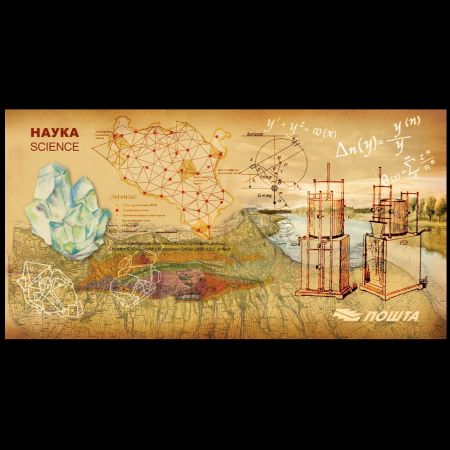 |
| Circulated FDCs | ||
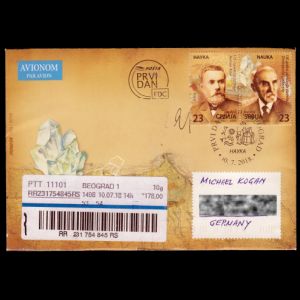 |
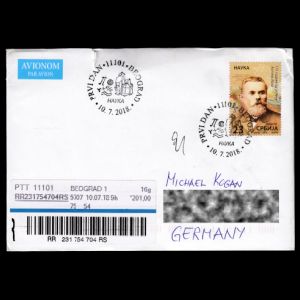 |
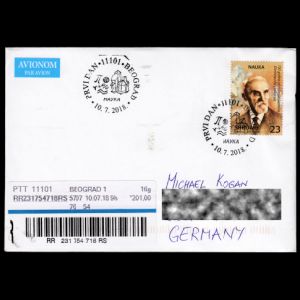 |
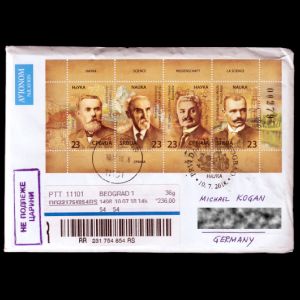 |
||

|
References
Serbian Post, colnect.Acknowledgements:
Many thanks to Dr. Peter Voice from Department of Geological and Environmental Sciences, Western Michigan University, for reviewing the draft page.| <prev | back to index | next> |
